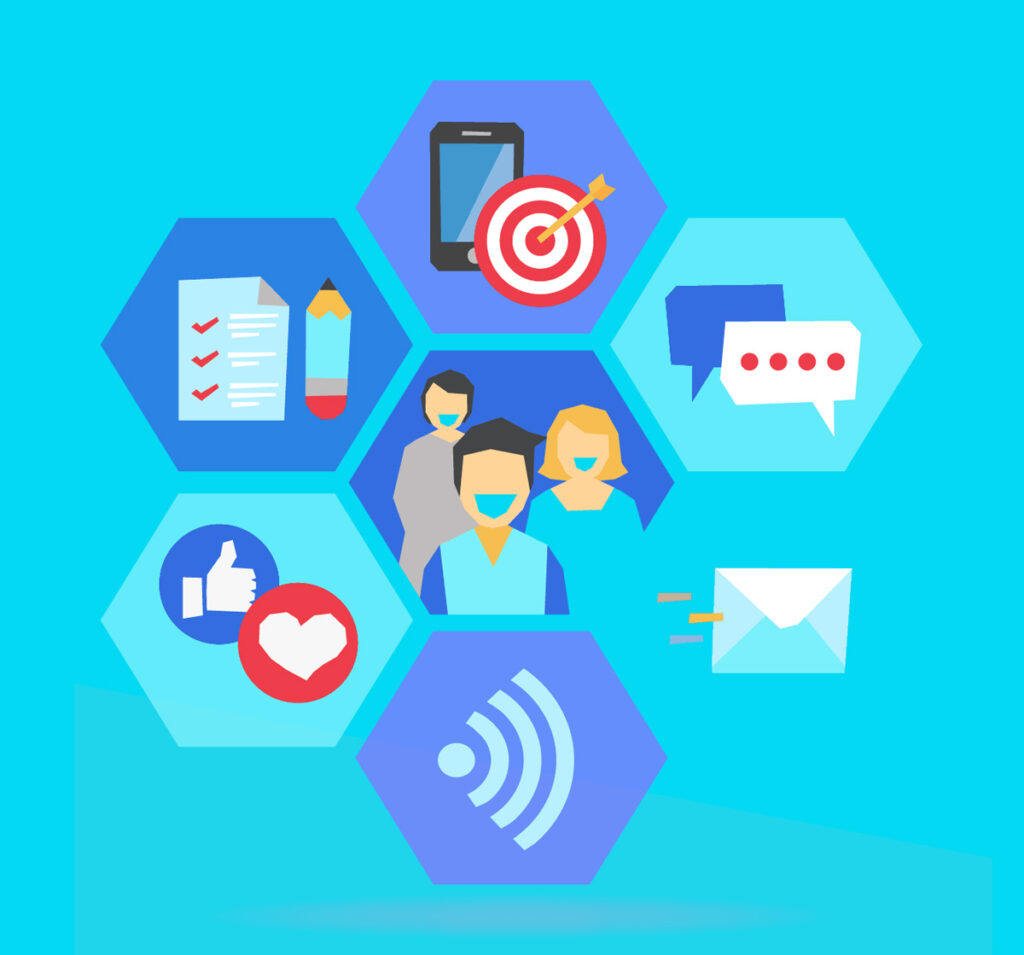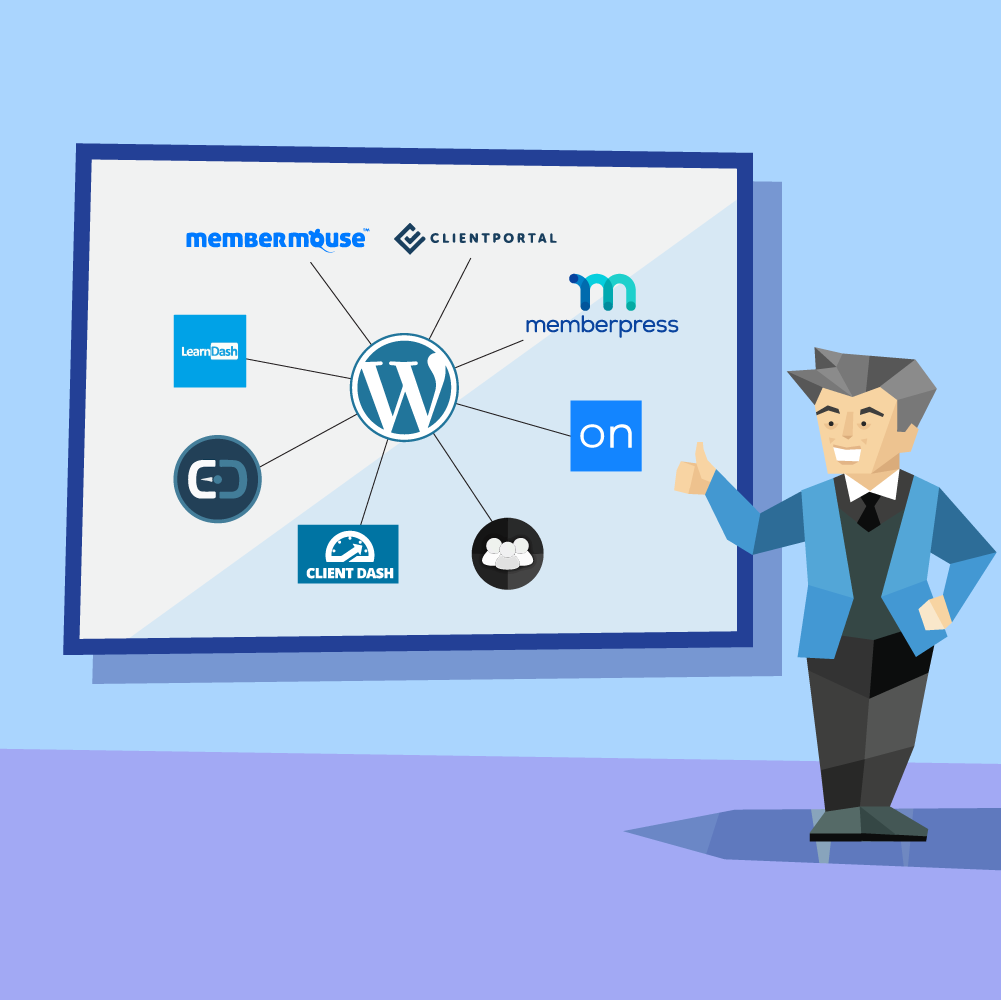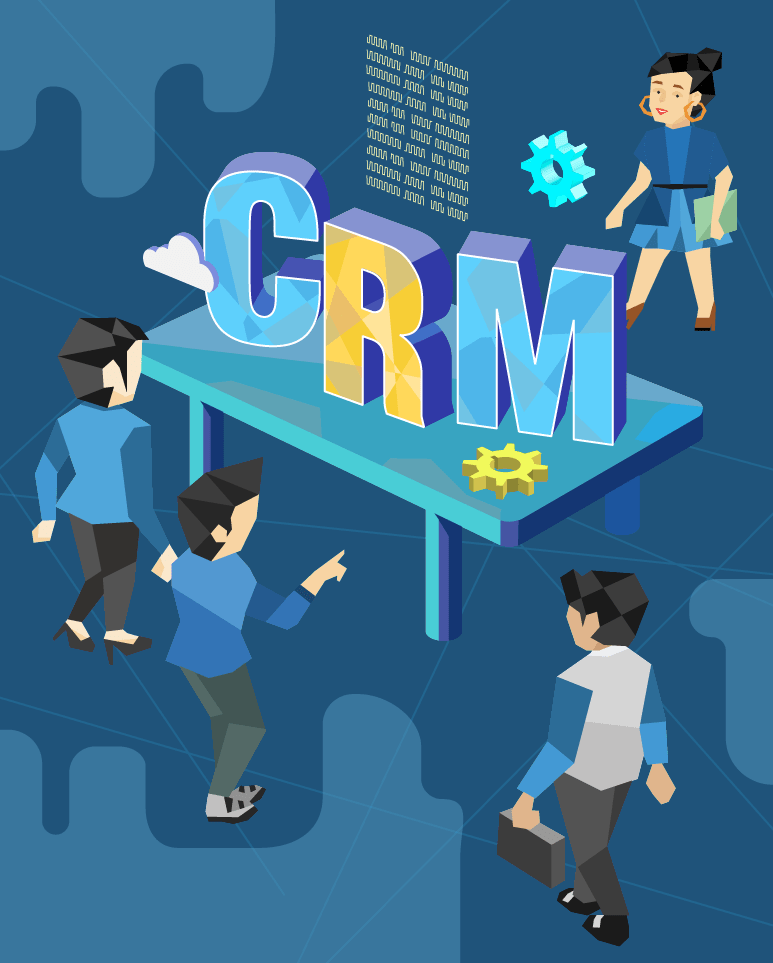Incorporating Chatbots and CRM to Propel Your Business
Chatbots are novel, AI (Artificial Intelligence) based software robotics systems that have the capability of radically altering “business as usual” to the point of sparking an IT revolution. Chatbots – or simply, bots – allow human language to be used in human-to-computer interactions, which – along with a Conversational UI – is the evolution of technological, computer-based interfaces for all types of operations. Chatbots are typically used for the automation of critical business processes, while also operating as AI-based tools that can drive Business Intelligence production, Big Data Analysis, and all forms of corporate data science operations. However, what makes Chatbots unique is how users interact with them. From utilizing bash-shell scripting and computer programming – syntax-based commands (a Command Line Interface/CLI), given to computer systems for user interaction, to utilizing a Graphical User Interface (GUI) – allowing a mouse-based point and click system of interaction – to touch based tablet/smartphone human-to-computer interactions, chatbots allow humans to command, and interact, with computer systems via human language (voice and/or text). Such a radical departure from all previous forms of human-to-computer interactions allows for more streamlined, enhanced, and efficient end-user operations and engagements, while also allowing businesses to leverage such AI-based smart systems to enhance both internally-facing and externally-facing business operations and processes.
While users can benefit greatly from everyday personal use of chatbots, businesses can employ Chatbots in a myriad of ways, all of which can increase efficiency and productivity, lower overhead, and increase the bottom line. Chatbots can be used internally to optimize internal business workflows and increase personnel productivity. For instance, HR bots can automate all forms of HR tasks, from payroll, to training, to employee recruitment. Additionally, all forms of internal enterprise processes that can be automated – as opposed to being completed manually by a worker – can be completed by bots, allowing repetitive, simple, and mundane tasks to be completed in a more efficient and quick manner.
Additionally, chatbots can be used externally to optimize all workflows associated with the acquisition of prospects/leads, the conversion of such leads into customers, and all operations associated with customer retention. Selling an enterprise’s products/services is typically composed of three major departmental sectors – marketing, sales, and customer service. Additionally, an enterprise’s IT (Information Technology) infrastructure is typically composed of a number of different IT systems, one of which is Enterprise Systems. Such systems include Enterprise Resource Planning (ERP), Middleware platforms, and Customer Relationship Management (CRM). The latter, CRM, is one of the most significant systems that any SME – or larger enterprise – can utilize. CRMs are robust technological IT software systems used to organize, integrate and manage all workflows associated with marketing, sales, and customer service. Essentially, a CRM enterprise system is a central hub used to oversee all of a business’s customer relations. Thus, CRM is directly connected with the marketing/sales funnel, marketing/sales methodologies (i.e. inbound marketing, social media, email campaigns), and can be used for the ToFu (Top of the Funnel), MoFu (Middle of the Funnel), and BoFu (Bottom of the Funnel). CRM systems can be used to organize, manage, and integrate all workflows associated with obtaining and educating prospects, convincing leads that the enterprise has the right products or services for their issues, and completing the sale. After the sale, CRM systems can then manage all customer service inquiries, and store and analyze data associated with customers, including analyzing buyer personas, analyzing buyer patterns and needs, and completing other workflows associated with data analytics and business intelligence production.
Chatbots have a unique ability to integrate with all forms of corporate enterprise systems, especially CRM suites. Their use of advanced Artificial Intelligence, Machine Learning, and Deep Learning can aid personnel in carrying out all phases of the pre-sale, sale and post-sale workflows (marketing, sales, customer service) to increase the top line of any business and scale according to their long-term strategic plan.
Why Chatbots Matter in Customer Relations Management
While the human element will always be needed for a business to run, the advent of advanced computer systems revealed how robots can carry out certain tasks more efficiently than a human. The addition of Chatbots to any CRM system leverages smart AI-systems through task automation and by utilizing a robust conversational UI to provide an enhanced customer experience.
For AI systems to work effectively, they require large amounts of data for them to be “trained,” and for them to “learn.” Deep learning also allows chatbots to “learn from experience.” In an age of Big Data, Chatbots can utilize the massive datasets that enterprises often acquire to produce powerful business intelligence actionable insights helping business executives make the right decisions in the future. As data science and data analytics drive businesses more and more, chatbots can be used to intelligently analyze such data to produce the most effective strategies for the future. Integrating Chatbots with CRM suites allows AI-smart bots to optimally analyze customer information, customer buying patterns, buyer personas, customer preferences – and prospect/lead patterns/preferences – in a way that humans could previously not accomplish. While chatbots may be seen by some as mere software tools, the addition of powerful AI makes the Chatbot a game changer that can completely revolutionize all future business operations, including how businesses engage with their customers via CRM systems.
Automate Your Workflows and Get More Done
Chatbots are primarily used for internal workflow automation. They also automate external operations, engaging with customers through a conversational UI using text or voice-assistant chatbots. Chatbots allow personnel to focus on more critical corporate operations, effectively “replacing” many customer service personnel, and marketing/sales personnel. These employees are freed up to engage with leads, answer questions, market/promote a company’s products/services, complete sales, and help customers with their issues to aid in customer retention. Due to minimizing overhead and increasing business productivity, chatbots can also decrease customer acquisition costs (CAC), while at the same time increasing the bottom line.
Reduces Customer Service Bottlenecking
Customer service is one of the most important factors for reducing churn rates and increasing customer retention rates. For businesses to effectively carry out Customer service workflows, they must avoid CS bottlenecks at all cost. A bottleneck is any aspect of a system that causes a backup, or any business factor that fails and causes a loss of revenue or net profits, either directly or indirectly. When a company’s customer service department is ineffective, or lacks adequate personnel, aid – in the form of a smartly-engineered bot – can help to optimize CS workflows and inhibit all factors that cause bottlenecks, such as difficult customer inquiries, timeframes associated with solving complaints, or obtaining feedback.
Identify and Track Qualified Leads
One of the crucial aspects of marketing associated with the Top of the marketing Funnel is identifying qualified leads that have a high chance of converting into customers. This is important to save resources, reduce overhead and allocate manpower only for the prospects/leads that have been qualified. Chatbots – which can learn from experience and learn to identify buying/lead patterns (including qualified vs unqualified lead patterns) – can be tailored to identify and track qualified leads throughout the buyer’s journey, , while also aiding personnel with converting these leads into customers. Such a novel AI-based tool allows for a vast improvement over current lead tracking tools, providing companies with a very positive ROI.
New Tech Opening New Possibilities
New technologies always have the ability to give companies novel ways to carry out their business processes, while also offering a new direction and/or business model altogether for companies that need a change. Chatbots are no different, and as advanced applications of modern AI, they have the capabilities of allowing companies of all sizes to efficiently optimize their internal and external business operations and workflows, and to carry out standard business operations in a whole new way. For instance, combining chatbots with the Internet of Things (IoT) and Big Data could give a company the opportunity to offer a completely new product/service, or to optimize their internal operations in a unique way.
How Bots Are Changing the Face of CRMs
The most critical operations of any company are obtaining customers and retaining customers. Thus, any tool that enhances CRM operations, and allows a company’s most important assets (the customer) to be more engaged, helps a company to scale and succeed. Chatbots are key tools that allow customers to communicate with their favorite brand in a new way – by utilizing the power of human language combined with advanced Artificial Intelligence. As noted above, the primary usage of Chatbots is automation: marketing automation, sales workflow automation, and customer service workflow automation. Thus, chatbots convert all customer relationship systems from cost centers into optimal systems that can increase the bottom line and reduce overhead, all while increasing customer retention and acquisition rates.
CRMs Are Only as Good as the Relevant Data They Provide
Customer Relationship Management enterprise suites are used to not only manage all customer-relation workflows, but to store and analyze data associated with customers/leads, which allows marketing, customer service and sales officers to have (at their fingertips) the critical data and information that can drive future marketing/sales campaigns, and the acquisition of more qualified leads/customers. In this data driven world, the effective utilization of corporate data is the key to success. Chatbots are able to effectively integrate with data science/analytics systems (i.e. Big Data, Business Intelligence, etc.), and with CRM suites, to ensure that the data that CRM suites provide can produce and reveal actionable insights that are practical, timely, and relevant. Additionally, due to the automation of marketing, sales and customer service workflows, data leakage issues – commonly associated with less-than optimal sales and customer service operations – is mitigated, allowing all critical customer data to be automatically logged into the system via the chatbot that engages with the customer/lead.
Get User Insights Through Messaging and Voice Applications
The unique feature that gives chatbots such an edge over standard applications is that they allow customers to communicate in human language – via a conversational UI that utilizes text and/or voice commands. Such Chatbots often piggyback on current, robust messaging and business apps, such as Slack, Facebook Messenger, and other systems connected with social media/social messaging platforms, which is often where prospects initially engage with a company’s online business assets. In conjunction with web analytics, chatbot systems and chatbot analytics not only allow the customer-to-brand communication experience to be greatly enhanced, but also allows marketing/sales officers to understand the interests, buying patterns, and buyer personas of prospects and leads more directly, based on actual messaging and voice data that is stored and analyzed via the CRM system. While analyzing metadata, metrics and KPIs (Key Performance Indicators) is useful for gaining user insights, analyzing the actual messages of customers and leads is a more effective process for gaining user insights. Such insights into the mind of users allows executives to craft and alter workflows accordingly, or design new marketing and sales strategies for the future.
Syncing Marketing, Sales and Customer Service
CRM enterprise systems are also used for the organization and integration of marketing, sales, and customer service workflows and data. When all three aspects of a company’s silos (marketing, sales, customer service) are operating in concert, crafting marketing strategies, sales processes, and customer service operations in a way that matches each customer/prospect’s past buying patterns becomes more feasible and efficient. With the addition of an AI-smart bot, the CRM system becomes a smartly-driven, integrated, central hub for the management, organization and integration of all marketing, sales, and CS workflows, all with advanced AI-bots analyzing customer data and producing the most pertinent, actionable insights.
Practical Uses in the Business World
AI-based Chatbots can be used in a variety of ways to increase company efficiency, productivity, and operational efficacy. When integrated with corporate data analytics systems and enterprise systems, chatbots can radically alter “business as usual.” As noted by Chatbots Magazine, there are a number of practical business uses for Chatbots when they are integrated into CRM enterprise suites:
- Seamless and more Natural experience: While human-to-computer interactions have come a long way, the use of conversational UIs and natural language processing (NLP) allows customers to interact with their favorite brands in a natural way. Robust AI-bots are able to answer customer queries much quicker and often more efficiently than a human, which enhances the customer experience and provides a seamless experience. For example, instead of a customer searching for a FAQ page on a business website, he/she may post a query in their native language to a company via Facebook Messenger, in which the company’s bot may answer within a matter of seconds, thus saving the customer time and energy.
- Chatbots allow companies to employ strategic differentiators, while also allowing enterprises the ability to solve standard issues with a novel tool. Such innovation can increase company efficiency, reduce overhead and project timelines, and increase the bottom line. For instance, chatbots can be used to capture critical data associated with a prospect/lead during different phases of the buyer’s journey, allowing data analytics to be applied so that the bot can better understand the needs of the customer in the future and apply a more pertinent marketing/sales strategy.
- Companies can save overhead and time employing chatbots to aid qualified leads throughout the sales process, allowing customer service/sales representatives to spend crucial time and energy on more critical sales tasks, such as closing the actual sale and providing needed assistance with specific product/service issues.
As noted by RubyGarage, modern CRM suites can be problematic, such as the fact that Customer Support requires a massive amount of overhead, and non-robust CRM suites often slow down marketing/sales/CS processes and cause slower response times, which can hurt the bottom line. All these issues can be decreased by utilizing automated AI-bots.
Scaling Your Business is Not an Issue
One of the most important aspects associated with any company’s IT systems is scalability. Thankfully, while certain aspects of a company’s IT infrastructure may not scale, a well-built chatbot is able to scale with a company as it grows, while a robust chatbot is also able to be integrated with more advanced IT systems as the company adopts newer technologies. As chatbot technologies advance, they will be able to grow and adapt with a company’s changing strategies and systems, and with a changing global environment.
Catering to a Generation that Prefers to Messaging
According to Gartner, by 2020, 85 percent of users will interact with their favorite brand without communicating with an actual human, but with a bot. Additionally, as the majority of users utilize messaging apps on their smart devices, the ability of bots to integrate directly within messaging apps – such as Slack, Messenger, Skype – allows companies to take advantage of the large user base of popular messaging platforms to reach their end-users in a way that is unprecedented.
Quick and Easy Response Times
As noted above, Chatbots are crafted for automation, allowing a pre-programmed, advanced AI-bot to not only offer quick and seamless answers to user queries, but also allows the bot to grow, learn, and adapt in order to better serve customers in the future, via Machine Learning/Deep Learning algorithms.
Bots Can Be Integrated With Popular Platforms
Chatbots can be standalone bots, can be integrated with web systems, or can be integrated with already popular platforms, such as Facebook, Slack, Skype, Uber, etc., which allows companies to leverage popular platforms to reach a more massive audience in a feasible manner.
Gives Sales Reps More Time to Close Warm Leads
As noted above, the use of automation AI-chatbots within the sales cycle can allow important sales tasks to be automated, leaving skilled sales representatives with the time and tools necessary to pursue warm leads, convert them into qualified leads, and effectively close the sale, thus converting the lead into a full-fledged customer. Additionally, chatbots can be used throughout the entire buyer’s journey for the same purpose – automating important tasks, and thus leaving skilled personnel with the time and tools to perform critical marketing/sales/CS tasks to ensure a more efficient process, all of which increases the bottom line.
Use Bots as a Content Marketing Tool
The modern approach of providing valuable content to attract prospects/leads is known as content marketing, of which a primary methodology is inbound marketing. As truly flexible tools, Chatbots can even be integrated with content marketing systems and strategies and crafted to engage prospects online with valuable information, all with a novel conversational UI – and in natural human language – to give marketing officers a unique approach to engaging and reaching prospects and leads.
Your Next Step: To Bot or Not to Bot
Companies should determine via an IT strategic plan whether Chatbots can help to effectively increase their bottom line and operate as a cost effective measure for increasing customer engagement. The strategic deployment of chatbots in SMEs – and larger enterprises – should be done with a goal in mind, and should be aligned with the company’s overall blueprint or business model. Ultimately, chatbots are the future, and for a company to not get on board with the future of AI may mean forfeiting large future returns and profits.
AI and Chatbots are Uprooting Traditional CRMs
Just as AI is disrupting traditional tech-based, corporate workflows, so chatbots are creating a revolution within the enterprise world of CRM suites and systems. While traditional CRMs have helped companies to engage with customers for decades to increase sales and customer retention rates, Chatbots help to mitigate the issues associated with modern CRM suites, while giving companies the unique ability to leverage advanced AI analytics systems. Chatbots can autonomously learn, grow, offer seamless and quick responses to user queries, and can even help executives craft more efficient strategies in the future based on AI-produced business intelligence reports.
Where Are Your Customers Spending Their Time?
According to several studies, while customers do engage with companies on business websites and social media, end users are spending an unprecedented amount of time using messaging apps. Thus, it is important for companies to meet customers where they spend their time. Due to the innate ability for chatbots to integrate with messaging apps, it is crucial for businesses to begin utilizing robust Chatbots to engage with their user base within messaging apps in a way that can increase both the bottom and top lines.









